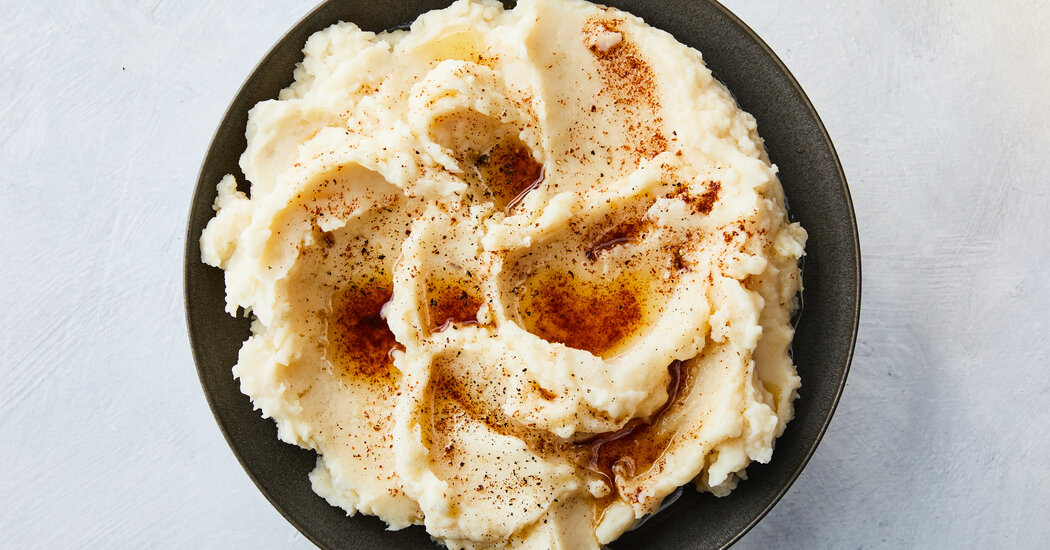
Mashed potatoes, while buttery and delicious, can also be a little uninspired. To me, they’ve always felt like filler on my Thanksgiving plate — an afterthought, more vehicle for gravy than anything else.
I wondered: How could I turn a “just fine” side dish into something to get excited about?
The answer may be brown butter.
In the hopes of discovering my platonic ideal, I started testing reader suggestions accompanying this blueprint recipe from Julia Moskin, playing with potato variety, cooking and mashing methods, and flavors.
I had a few essential findings: Everyone thinks their version is supreme (all were delicious!). How you mash is up to you (one reader suggests finding a teenager “with a strong arm and a good heart who loves hanging out in the kitchen”). And, at the end of the day, you can make just about anything taste good with enough butter and salt.
In the end, my favorite version emerged from a two-year-old Thanksgiving memory. Stuck in a midpandemic slump and antsy to revive my culinary curiosities, I decided to bolster the potatoes with a little brown butter. I haven’t looked back since.
This dish infuses earthy russet potatoes with the toasty, nutty notes of brown butter and the aromas of garlic, rosemary and thyme, imparting a distinct flavor that makes them taste luxurious without much extra work or ingredients.
Browning butter may seem intimidating, but it is really quite simple. Its transformation is at once incremental and instantaneous. You may not think you’re doing it right, and then, all of a sudden, it happens.
As butter heats in a saucepan, its water content begins to evaporate, resulting in a vigorous boil. After about five or so minutes of bubbling, a hush falls. The liquid becomes more viscous, and the bubbles turn to foam. The milk solids underneath start to caramelize and turn chestnut brown. Be mindful, for butter can go from brown to burned very quickly. As soon as brown flecks rise to the surface, remove it from the heat and stir well, taking care to scrape the “fond” — the bits stuck on the bottom of the pan.
The result is a brilliant amber, a combination of toasted milk solids and clarified butter, with a nutty aroma that’s reminiscent of a bakery in France. I tend to make a big batch the day before Thanksgiving so that I can sneak it into various desserts, the gravy and, of course, the mashed potatoes.



